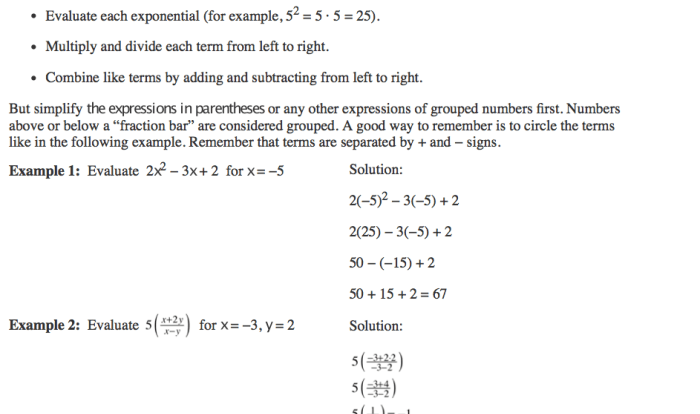Embark on a mathematical odyssey with Unit 4 Linear Equations Answer Key, your ultimate guide to mastering the fundamentals of linear algebra. Delve into the fascinating world of linear equations, unravel their complexities, and unlock the power to solve real-world problems with ease.
From defining linear equations and understanding slope and y-intercept to exploring practical applications and graphing techniques, this comprehensive resource provides a step-by-step roadmap to success. Prepare to conquer the challenges of linear equations with confidence and finesse.
Linear Equations Basics
Linear equations are equations that can be written in the form y= mx+ b, where mis the slope and bis the y-intercept. They are called linear because their graphs are straight lines.
The slope of a line is a measure of its steepness. It is calculated by dividing the change in yby the change in x. The y-intercept is the point where the line crosses the y-axis.
Examples of Linear Equations, Unit 4 linear equations answer key
- y= 2 x+ 3
- y= – x+ 5
- 2 x– 3 y= 6
Solving Linear Equations
Linear equations are algebraic equations of the first degree, meaning they contain only one variable raised to the power of one. Solving linear equations involves finding the value of the variable that makes the equation true.
There are several methods for solving linear equations, including:
- Substitution method:Substituting the value of one variable in terms of the other variable and solving for the unknown variable.
- Elimination method:Adding or subtracting the same quantity to both sides of the equation to eliminate one variable.
- Multiplication method:Multiplying both sides of the equation by the same non-zero quantity to simplify the equation.
The step-by-step process of solving equations typically involves:
- Isolating the variable term on one side of the equation.
- Simplifying the equation by combining like terms.
- Solving for the variable by performing the inverse operation of the coefficient.
For example, to solve the equation 2x + 5 = 13, we can:
- Subtract 5 from both sides: 2x = 8
- Divide both sides by 2: x = 4
Therefore, the solution to the equation 2x + 5 = 13 is x = 4.
Practice Problems
- Solve for x: 3x – 7 = 16
- Solve for y: 2y + 5 = 13
- Solve for z: 4z – 10 = 18
Applications of Linear Equations
Linear equations have numerous applications in various fields, enabling us to model and solve real-world problems. They provide a powerful tool for understanding and predicting relationships between variables.
Linear equations are used extensively in:
Science and Engineering
- Describing motion using kinematics equations: d = vt + 1/2at2
- Calculating forces in statics: F = ma
- Modeling electrical circuits using Ohm’s law: V = IR
Economics and Business
- Determining revenue: R = px
- Forecasting demand: y = mx + c
- Setting break-even points: TR = TC
Medicine and Healthcare
- Predicting drug dosage: D = kBW
- Estimating blood pressure: BP = 120 + 0.5(age)
- Modeling population growth: P = Pert
Project/Activity
Grocery Budget Calculator
Design a spreadsheet or online calculator that allows users to input the prices and quantities of groceries they need. The calculator should use linear equations to calculate the total cost of the groceries and display a graph showing the relationship between the total cost and the number of items purchased.
Systems of Linear Equations
A system of linear equations consists of two or more linear equations that are solved simultaneously. Solving systems of linear equations allows us to find the values of the variables that satisfy all the equations in the system.
Methods for Solving Systems of Equations
There are several methods for solving systems of linear equations, including:
- Substitution method
- Elimination method
- Matrix method
Substitution Method
The substitution method involves solving one equation for one variable and then substituting that expression into the other equation. This reduces the system to a single equation in one variable, which can then be solved.
Elimination Method
The elimination method involves adding or subtracting the equations in the system to eliminate one of the variables. This creates a new system of equations with one less variable, which can be solved using the substitution method or the elimination method again.
Matrix Method
The matrix method involves representing the system of equations as a matrix and then using matrix operations to solve for the variables. This method is particularly useful for solving systems with three or more variables.
Linear Equations in Multiple Variables
Solving linear equations with multiple variables extends the concepts of solving linear equations with one variable. In this section, we will explore methods for solving systems of linear equations involving multiple variables, using matrices or other techniques.
Solving systems of linear equations is essential in various fields, including mathematics, physics, economics, and engineering. These systems arise when we model real-world problems involving multiple unknown quantities.
Solving Systems Using Matrices
Matrices provide a systematic way to represent and solve systems of linear equations. A matrix is a rectangular array of numbers arranged in rows and columns. We can represent a system of linear equations in matrix form as follows:
$$\beginbmatrixa_11 & a_12 & \cdots & a_1n \\\ a_21 & a_22 & \cdots & a_2n \\\ \vdots & \vdots & \ddots & \vdots \\\ a_m1 & a_m2 & \cdots & a_mn\endbmatrix\beginbmatrixx_1 \\\ x_2 \\\ \vdots \\\ x_n\endbmatrix=\beginbmatrixb_1 \\\ b_2 \\\ \vdots \\\ b_m\endbmatrix$$
where:
- $A$ is the coefficient matrix, containing the coefficients of the variables.
- $X$ is the column vector of variables.
- $B$ is the column vector of constants.
To solve the system using matrices, we can use techniques such as Gaussian elimination or Cramer’s rule.
Graphing Linear Equations: Unit 4 Linear Equations Answer Key
Linear equations can be represented graphically on a coordinate plane. Graphing linear equations allows us to visualize the relationship between the variables and understand the behavior of the equation.
Step-by-Step Guide to Graphing Linear Equations
1.
-
-*Plot the y-intercept
The y-intercept is the point where the graph crosses the y-axis. To find the y-intercept, set x = 0 in the equation and solve for y.
- 2.
- y1) / (x2
- x1).
- 3.
- 4.
-*Find the slope
The slope is the measure of how steep the line is. It is calculated as the ratio of the change in y to the change in x. To find the slope, use the formula: slope = (y2
-*Plot additional points
Use the slope and y-intercept to plot additional points on the graph. Choose a few values for x and solve for the corresponding y-values.
-*Connect the points
Draw a line through the plotted points. This line represents the graph of the linear equation.
Interactive Graph
[Insert interactive graph here that allows users to plot and analyze linear equations]
FAQs
What is the difference between a linear equation and a quadratic equation?
A linear equation is a first-degree equation, meaning it contains variables raised to the power of one or zero. A quadratic equation, on the other hand, is a second-degree equation, involving variables raised to the power of two.
How do I solve a system of linear equations?
There are several methods for solving systems of linear equations, including substitution, elimination, and matrix methods. The choice of method depends on the specific system and the number of equations involved.
What are the applications of linear equations in real life?
Linear equations have numerous applications in various fields, such as physics, engineering, economics, and finance. They are used to model relationships between variables, predict outcomes, and make informed decisions.

